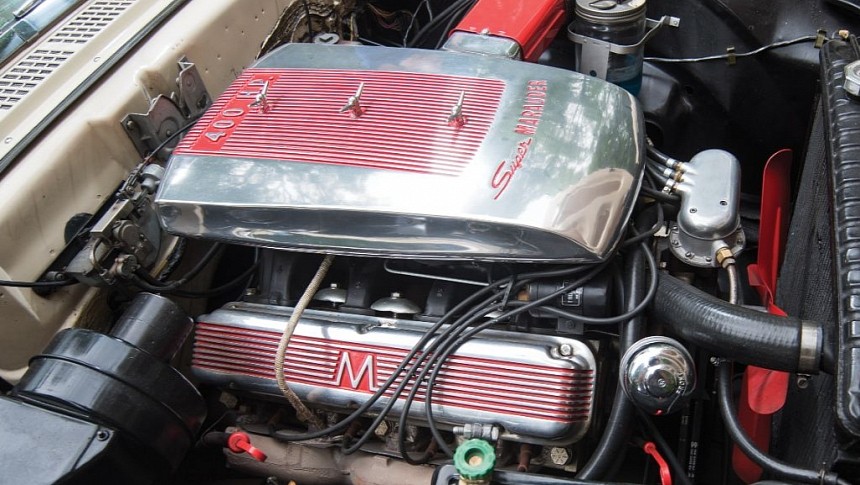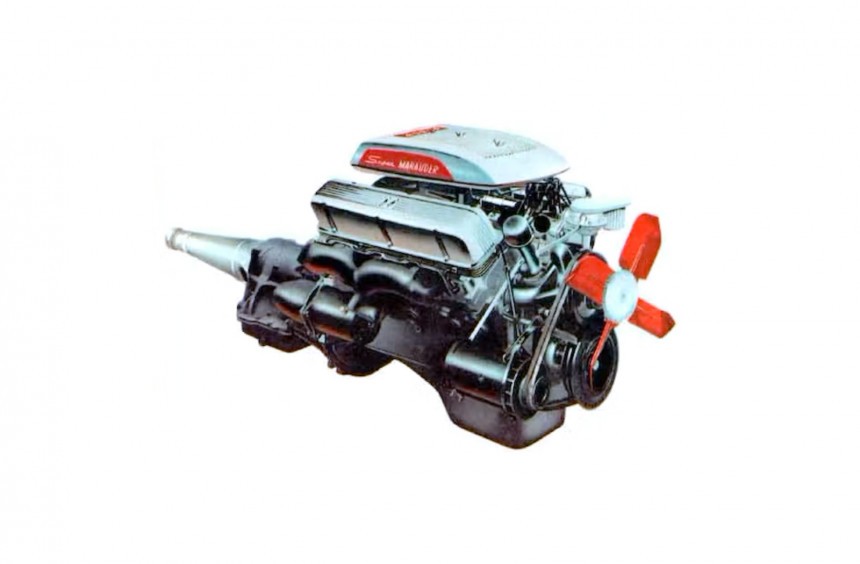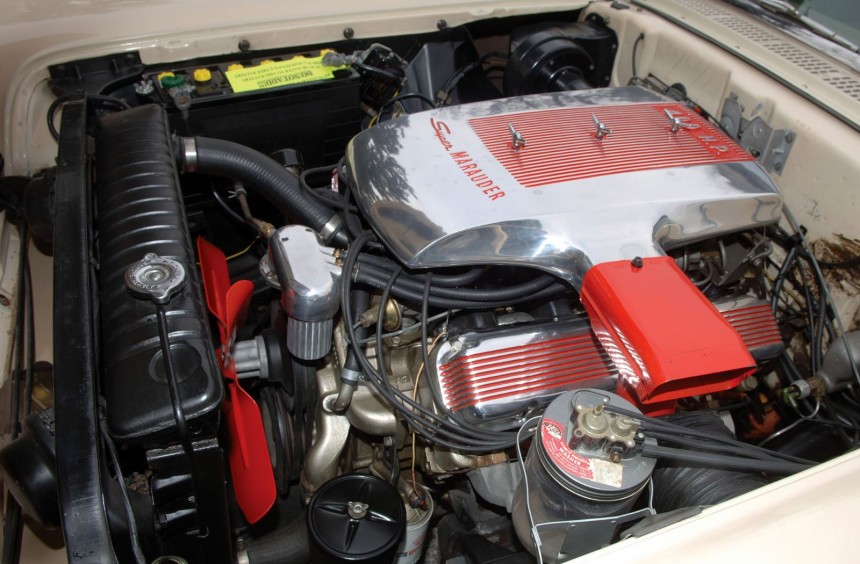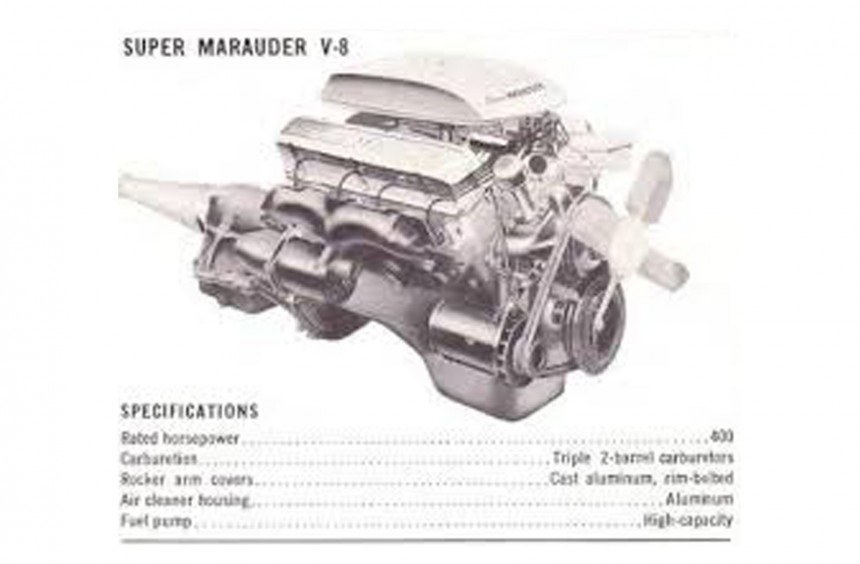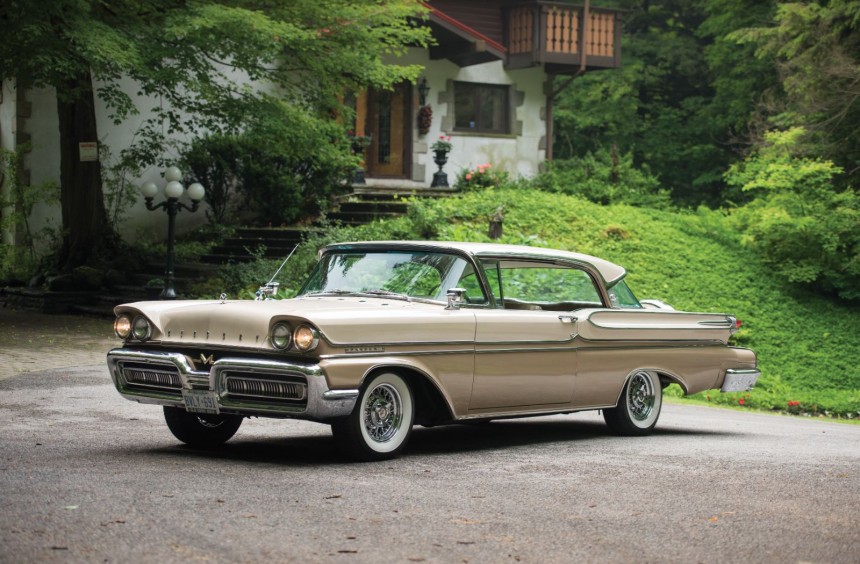About a decade before the muscle car war was in full effect, Ford's Mercury division unleashed America's first production V8 capable of spitting out 400 hp.
Launched in 1938, the Mercury brand produced upscale modes slotted between Ford and Lincoln. It survived until 2011, when it rode into the sunset with a reputation for building vehicles that only appealed to grandparents.
However, several decades before it solidified this undesirable reputation, Mercury was responsible for one of the coolest pony cars of the late-1960s, the first-generation, Mustang-based Cougar.
In high-performance XR-7 or Eliminator guise, the Cougar was not just one of the coolest models of its kind, but also one of the most powerful, and it remains one of the icons of the original muscle car era to this day.
But, contrary to popular belief, Mercury's foray into the world of high performance started with something other than the Cougar.
In 1958, the Ford Motor Company introduced a new line of V8s dubbed MEL (Mercury-Edsel-Lincoln). As the name implies, it was designed to be used by the Mercury, Edsel, and Lincoln divisions, replacing the older Lincoln Y-block, but one version was also available on the Ford Thunderbird during the 1959 and 1960 model years.
At the time of its introduction, the MEL range of big block V8s included three displacement versions. The first and smallest was a 383-ci (6.3-liter) called Marauder. Rated at 322 hp, it only powered Mercury-badged cars.
The second MEL was larger, displacing 410 ci (6.7 liters) and producing 345 hp. It could be had only with the 1958 Edsel Citation and Corsair models.
At the top of the list was a 430-ci (7.0-liter) version that came standard on all Lincolns but was also optionally available on all Mercurys and, a year later, on Ford's Thunderbird.
Capable of delivering up to 375 hp in standard, Lincoln-spec, the large eight-cylinder was beefed up by Mercury's engineers, giving birth to the most powerful member of the MEL family: the Super Marauder.
The standard Mercury 430 - with a bore and stroke of 4.3 by 3.7 inches (109.22 x 93.9 mm) and a 10.5:1 compression ratio courtesy of a single Holley four-barrel carburetor - was rated at 365 hp. Though it was ten ponies less powerful than its Lincoln-spec counterpart, the engine still delivered an impressive output figure, especially for 1958.
But Mercury engineers wanted to deliver a worthy competitor for the limited-edition, 390-hp Chrysler 300C introduced in 1957 and set their sights on developing the first American production V8 capable of delivering 400 hp.
To achieve this magical figure, they sought help from off-roading legend and engine wizard Bill Stroppe who upgraded the 430 with a new aluminum intake manifold and a set of three vacuum-actuated Holley 2300 two-barrel carbs.
Stroppe also suggested swapping the standard cam with a more aggressive variant, but early tests showed that the upgrades mentioned above were enough to produce 400 hp at 5,200 rpm and 500 lb-ft (677 Nm) of torque at 3,200 rpm, so the beefed-up engine christened Super Marauder retained the stock 430 cam.
To differentiate it from the standard 430, Mercury gave the engine a bespoke aluminum air filter designed by former Ford stylist, hot rod legend, motorcycle racer, and Rod & Custom magazine editor Lynn Wineland.
Although it was America's first production V8 capable of making 400 horses, Mercury didn't invest too much time and effort to advertise it properly.
Instead, the option was all but a footnote on the company's brochures available in select dealerships. According to surviving documents, the engine was available on Mercury's station wagons, Turnpike Cruiser, Park Lane, and Montclair.
Apart from those models, the Super Marauder was also fitted inside the engine bays of a few Lincolns (albeit without the unique air filter cover) and several other Mercurys as over-the-counter dealership upgrades.
Nevertheless, all the cars that featured the powerful engine were full-size land yachts. Therefore, their massive chassis limited the Super Marauder's true potential, so in terms of performance, these cars were only capable of mid-sixteen quarter-mile times.
Essentially a muscle car engine that never graced the engine bay of an actual muscle car, the Super Marauder was only built during the 1958 model year in around 100 units - all linked to the division's Multi-Drive Merc-o-Matic automatic gearbox.
If the pony car craze started six years earlier or Ford had decided to build a sportier Corvette contender around this potent motor, its story would have been much different, and we would be talking about a legendary engine instead of a long-forgotten one.
Today, surviving 1958 Mercurys equipped with the Super Marauder are extremely rare. However, their values are surprisingly low due to the chassis' lack of sportiness and the engine's lack of notoriety.
The most recent example we found dates back to 2019. A 1958 Montclair two-door hard top was listed on ClassicCars.com with a starting bid of $65,000.
However, several decades before it solidified this undesirable reputation, Mercury was responsible for one of the coolest pony cars of the late-1960s, the first-generation, Mustang-based Cougar.
In high-performance XR-7 or Eliminator guise, the Cougar was not just one of the coolest models of its kind, but also one of the most powerful, and it remains one of the icons of the original muscle car era to this day.
But, contrary to popular belief, Mercury's foray into the world of high performance started with something other than the Cougar.
The most potent yet obscure member of the MEL engine family
At the time of its introduction, the MEL range of big block V8s included three displacement versions. The first and smallest was a 383-ci (6.3-liter) called Marauder. Rated at 322 hp, it only powered Mercury-badged cars.
The second MEL was larger, displacing 410 ci (6.7 liters) and producing 345 hp. It could be had only with the 1958 Edsel Citation and Corsair models.
At the top of the list was a 430-ci (7.0-liter) version that came standard on all Lincolns but was also optionally available on all Mercurys and, a year later, on Ford's Thunderbird.
Capable of delivering up to 375 hp in standard, Lincoln-spec, the large eight-cylinder was beefed up by Mercury's engineers, giving birth to the most powerful member of the MEL family: the Super Marauder.
The first American production V8 to make 400 hp
But Mercury engineers wanted to deliver a worthy competitor for the limited-edition, 390-hp Chrysler 300C introduced in 1957 and set their sights on developing the first American production V8 capable of delivering 400 hp.
To achieve this magical figure, they sought help from off-roading legend and engine wizard Bill Stroppe who upgraded the 430 with a new aluminum intake manifold and a set of three vacuum-actuated Holley 2300 two-barrel carbs.
Stroppe also suggested swapping the standard cam with a more aggressive variant, but early tests showed that the upgrades mentioned above were enough to produce 400 hp at 5,200 rpm and 500 lb-ft (677 Nm) of torque at 3,200 rpm, so the beefed-up engine christened Super Marauder retained the stock 430 cam.
To differentiate it from the standard 430, Mercury gave the engine a bespoke aluminum air filter designed by former Ford stylist, hot rod legend, motorcycle racer, and Rod & Custom magazine editor Lynn Wineland.
Poorly advertised and available only on huge land yachts
Instead, the option was all but a footnote on the company's brochures available in select dealerships. According to surviving documents, the engine was available on Mercury's station wagons, Turnpike Cruiser, Park Lane, and Montclair.
Apart from those models, the Super Marauder was also fitted inside the engine bays of a few Lincolns (albeit without the unique air filter cover) and several other Mercurys as over-the-counter dealership upgrades.
Nevertheless, all the cars that featured the powerful engine were full-size land yachts. Therefore, their massive chassis limited the Super Marauder's true potential, so in terms of performance, these cars were only capable of mid-sixteen quarter-mile times.
Way ahead of its time
If the pony car craze started six years earlier or Ford had decided to build a sportier Corvette contender around this potent motor, its story would have been much different, and we would be talking about a legendary engine instead of a long-forgotten one.
Today, surviving 1958 Mercurys equipped with the Super Marauder are extremely rare. However, their values are surprisingly low due to the chassis' lack of sportiness and the engine's lack of notoriety.
The most recent example we found dates back to 2019. A 1958 Montclair two-door hard top was listed on ClassicCars.com with a starting bid of $65,000.
